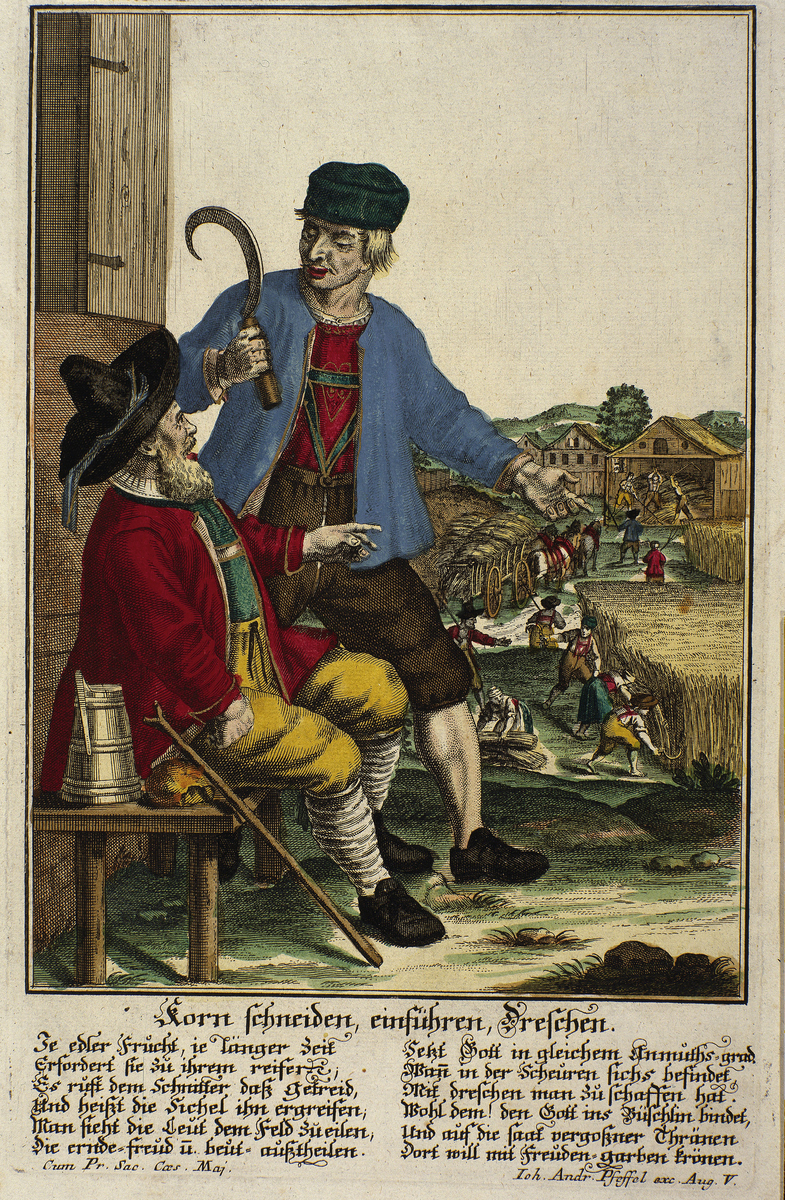Abstract
Although there was a rise in manufacturing in the German territories in the eighteenth century, agriculture remained the main source of employment by far. The German lands were a diverse mosaic of agricultural economies, ranging from the large East Elbian estates in Prussia to the fragmented plots tended by smallholders in southwestern Germany. But the predominant crops everywhere were rye, wheat, barley and oats – all used in the production of bread and other cereal foods, beer, and horse fodder. They were also the principal commodities on agricultural markets. Apart from food and fodder crops, German farmers cultivated many commercially important crops – especially flax (for linen and oil), vegetables, dye and medicinal plants, and even inferior-grade tobacco. The potato did not become a staple among the poorer classes until the late eighteenth century. The three main stages of the grain harvest – reaping (with sickles to minimize the loss of kernels), binding and hauling, and threshing – are shown in the background of this engraving. In the foreground, two figures – presumably the farmer and his foreman or son – are seen in consultation. The caption describes the seasonal progression of fieldwork and praises God for the good yield.
